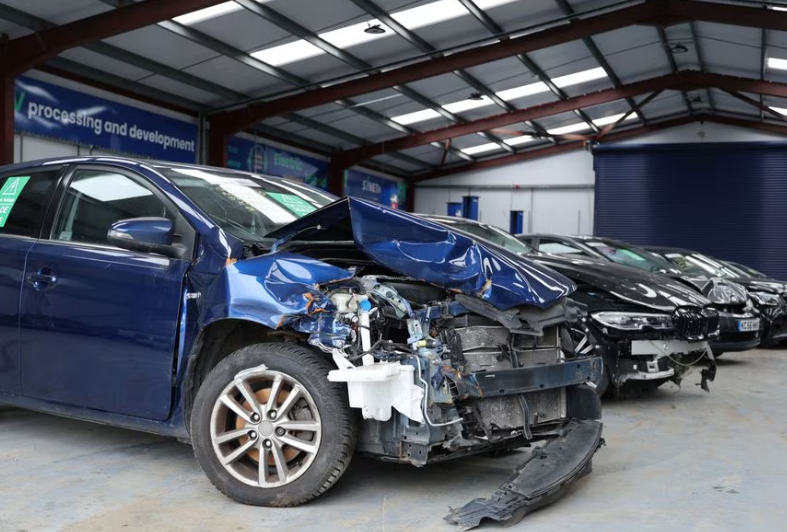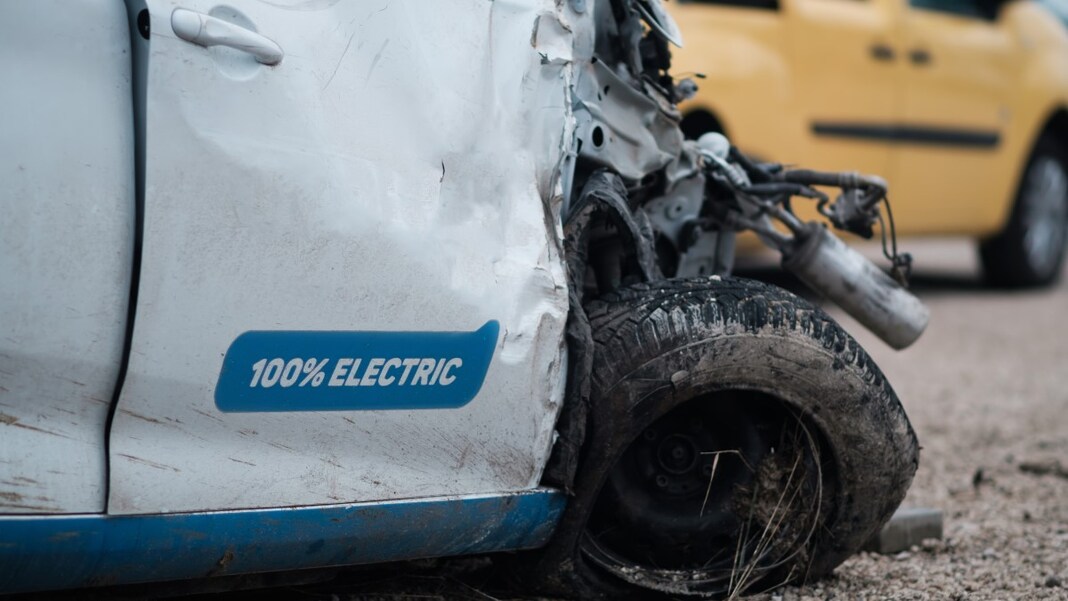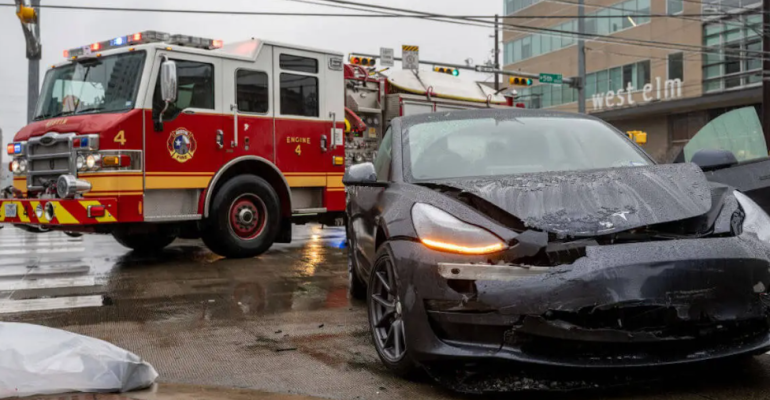OTTAWA – Auto repairers and insurers are examining repair techniques for electric-vehicle batteries involved in road accidents, so that slightly damaged batteries are not written off and junked.
The concern is that with batteries being a dominant and expensive element of BEVs, insurance premiums could rise if they cannot be repaired after accidents – making BEV purchases even more costly. Growing stockpiles of damaged batteries might also curtail the sustainability of the BEV segment.
In the U.K., automotive sector risk intelligence specialist Thatcham Research is investigating the issue, probing BEV collision repair and salvage processes and their impact on insurance claims and associated costs. The research organization was established by the motor- insurance industry to contain motor insurance claims while maintaining safety standards. It is working with LV= General Insurance, a major U.K. EV insurer, part of the Germany-based insurer Allianz Group.
Chris Payne, LV= head of networks and engineering, says the project will focus on “the best way to repair EVs and their batteries, rather than writing them off.
“This will not only have a positive impact on claims costs but will also feed a healthy second-hand EV market,” he says.
A report by Thatcham for government R&D agency Innovate UK on the “Impact of BEV Adoption on the Repair and Insurance Sectors,” released July 5, says work is needed across the auto sector, from parts to aftermarket. It says in the U.K., “BEV claims are already about 25.5% more expensive than their (internal-combustion-engine) equivalents and are taking about 14% longer to repair.”
A key reason is that when batteries are damaged, as they “are a significant percentage of the original vehicle value”, insurers are more likely to write off an EV given “a lack of affordable or available repair solutions, inadequate post-accident diagnostics, and limited availability of recycling and reusability options.”
Adrian Watson, head of engineering research for Thatcham Research, tells Wards that for the BEV sector to thrive sustainably, these shortcomings need to be tackled in a comprehensive and transparent way.
“Everybody wants to make this a success,” he says of the BEV rollout. That will mean “some sort of economically sustainable model around batteries and battery repair and battery recycling and repurposing and refurbishment,” which could include third-party services repairing and stockpiling replacement batteries for installation in vehicles post-accident.
Recommendations in the report include standardizing battery diagnostics to include repair needs; developing a “battery in repair” workflow across the supply chain; simplifying battery transportation – a problem, given the toxicity of materials; a better understanding of incentives required to ensure capacity is created for repair, storage and recycling options; and more.
In the meantime, Watson expects OEMs to keep developing batteries that are less vulnerable. A key issue highlighted by the report was that “underbody damage is 85% likely to result in battery damage.” And more study of the handling and moving of EV batteries is needed because of battery fire risks, repair shops would need significantly more space to store damaged vehicles than ICEs, the report warns. And given batteries are sometimes part of the structural integrity of a vehicle, that means care is needed in moving BEVs, Watson says.
Given these and other differences with ICE vehicles, the report looks at how BEV-repair decision points – whether to repair, and if so, how, or whether, to write off a vehicle – differ radically from ICE decision-making.
Clearly new skills are needed, including BEV scrapping and recycling, adds U.K.-based salvage and used-car parts specialist Synetiq (pictured, below). The company in 2021 launched its own metal recycling apprenticeship to develop BEV recycling skills.

Looking ahead to the U.K.’s planned 2030 ban on sales of new ICE vehicles, Synetiq says: “Preparation is key, with a focus on safe and compliant dismantling of electric and hybrid vehicles ahead of the 2030 ban.”
Data on new vehicles will help aftermarket companies repair new BEVs, the U.S.-based Automotive Service Assn. says. It has been recruiting House of Representatives members for a newly established Vehicle Data Access Caucus whose goal is ensuring independent repair shops have access to information from in-vehicle ports and wireless transmission.
Scott Benavidez, ASA board chairman, says: “Independent repair shops conduct 70% of post-warranty repairs, and it is critical that independent repair shops continue to have access to the vehicle data they need to service these cars.”
In Germany, Carsten Reinkemeyer, head of safety research at the Allianz Center for Technology, a research institute owned by Allianz, confirms to Wards that there have been instances where relatively new BEVs had to be fully replaced due to the battery repair or battery replacement being economically unfeasible options, or blocked by the OEM.
“If the automaker does not facilitate battery repair and damage diagnostics through providing third-party access to battery cell data, total damage typically applies earlier for the EV than for a combustion-powered car, and higher premiums for EVs are a logical outcome.”
But, as in most markets, given the early stage of BEV expansion, only about 2% of damage claims in Germany involve BEV batteries, Reinkemeyer said.
Under the German system, insurers collect damage data for each model that is passed on to the German Insurance Federation, which then calculates claims expenditure for a model on a three-year average and readjusts insurance group ratings, the basis for insurance-premium calculations, adds Reinkemeyer.
That kind of information sharing will be essential as automakers and repairers develop services for damaged BEVs, says Thatcham’s Watson.
“The recommendations (from the report) are really for cross-industry bodies to get together” to consider issues such as standardization, technical solutions, post-accident battery diagnostics and more, he says. “We want everybody to be thinking about how we achieve a sustainable framework that maximizes retention of the value of the battery.”
– with Jens Kastner in Hamburg, Germany






